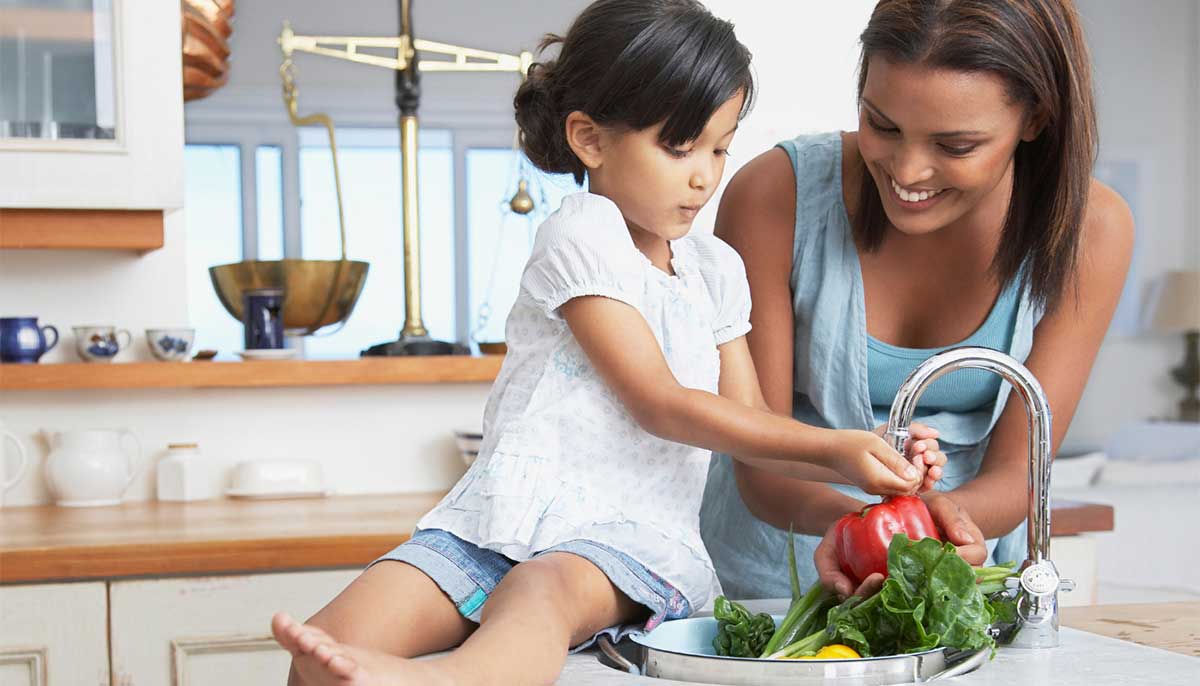By: Bessie O'Connor, RDN

As a caregiver, you are the most important influence on your children’s lives. Sharing positive cooking, shopping, gardening and eating experiences with children will inspire healthy eating habits over time and contribute to good health in childhood and adulthood. Role modeling takes health beyond getting children to “eat their vegetables.” It supports eating a variety of healthy foods for a lifetime and promotes physical, mental and social well-being. According to the Centers for Disease Control and Prevention, healthy children perform better on standardized tests, get higher grades, have better attendance and show improved concentration, memory and mood. Daily work, school and play schedules may look very different from one family to another, but there are many simple ways for busy adults to model healthy eating behaviors and engage children with food.
Model eating and enjoying a wide variety of foods.
Let children help with grocery shopping.
Engage children in food preparation.
Set and follow a daily meal and snack schedule.
Grow your own foods.
Engaging children with food will look different for every family, and incorporating every role modeling approach may not be possible. Start by picking one realistic way you want to be a healthy role model for your children. Celebrate your successes and keep shared food experiences positive, relaxed and enjoyable! For more information on role modeling and healthy eating, visit HealthyEating.org/FoodTasting.

Bessie O'Connor, RDN
Bessie O'Connor, RDN
Bessie is a practicing Registered Dietitian Nutritionist and the Community Nutrition Adviser for California’s Central Coast region.
Optimal nutrition during the time period from conception through age 24 months has positive health benefits during childhood and adulthood.

Watch the latest episode of Ask A Nutritionist and learn what are healthy snacks for children.

Subscribe to our blog to stay up to date on the latest news, products, and more.